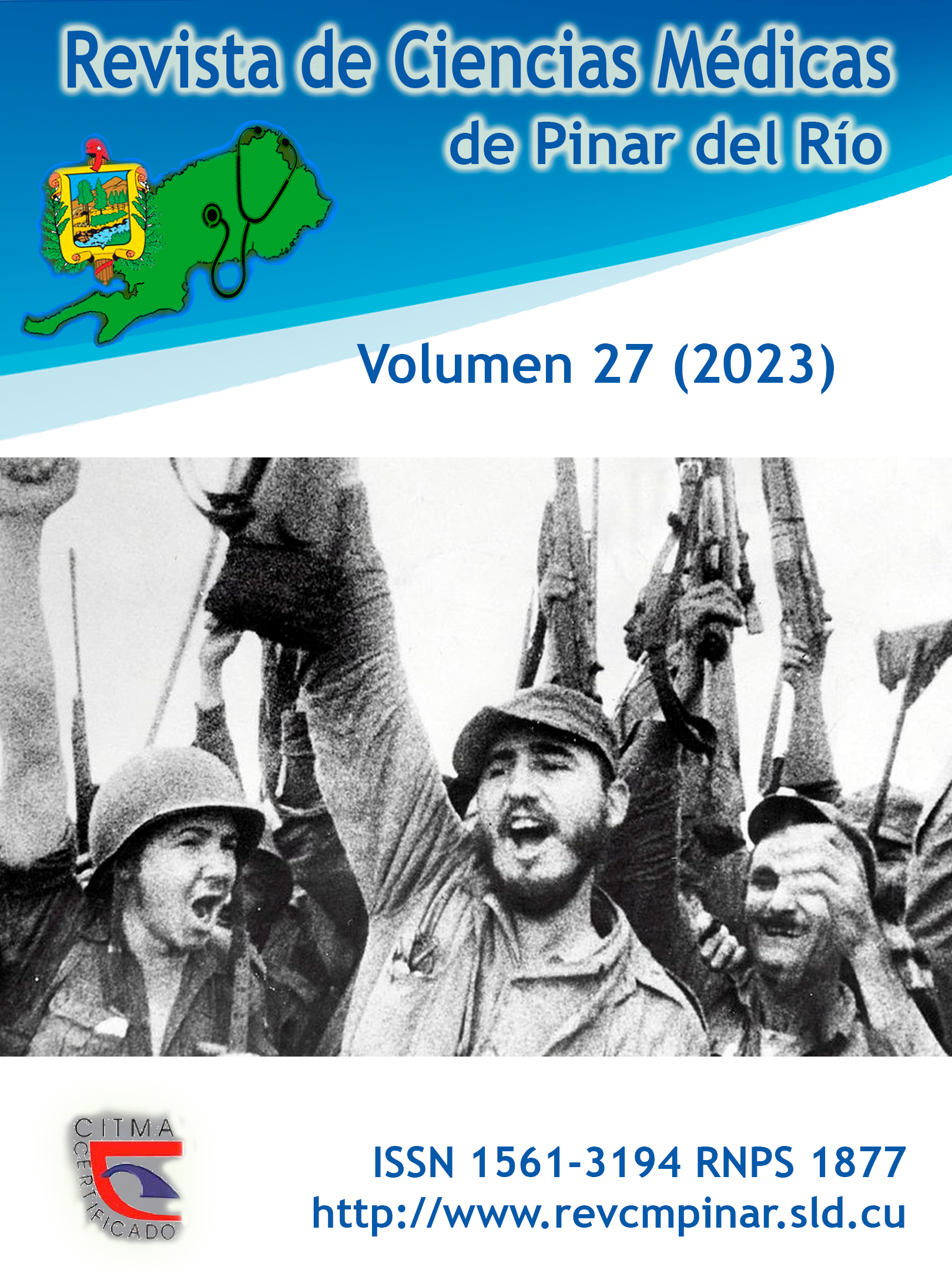Prototype application on Hemovigilance System in the province of Pinar del Rio
Keywords:
BLOOD SAFETY, GIFT GIVING, TRANSFUSION.Abstract
Introduction: the process of information management covers from the promotion of donation, donor selection, blood collection, donation complications, processing and analysis of blood components, transfusion and adverse and unexpected effects that the donor and recipient may present. the study is carried out because it is necessary to improve information management in order to optimize processes, workflow, analysis, registration and control. Therefore, it was decided to develop a prototype of its own application that complies with the necessary parameters for the work in the Hemovigilance System in Pinar del Rio Province.
Objective: to elaborate a prototype of a computer application for the management of the hemovigilance system in Pinar del Rio province.
Methods: a research study was carried out with the objective of developing the information architecture on which the hemovigilance system management process is based, applying the theoretical and empirical historical-logical, inductive-deductive, conversational and documentary analysis methods. Using the XP development methodology.
Results: the system allows recording, visualizing and controlling the development of the information generated by the Hemovigilance System in Pinar del Río.
Conclusions: It was obtained the design of a prototype of a computer application for the management of the hemovigilance system in Pinar del Río province that will allow the timely control for decision making at each stage of the process.
Downloads
References
1. OPS/OMS. Guía para establecer un sistema nacional de HV [Internet]. Washinton; 31 marzo 2017. [citado 15/02/2018]. Disponible en: http://www.paho.org/hq/index.php?option=com_content&view=article&id=13044%3Agui-hemovigilancia-2017&catid=4669%3Aannouncements-hss&Itemid=39594&lang=es .
2. Silva-Ballester HM, Bencomo-Hernández A, Benet CM, López-Fernández R, Valls W, Ballester Santovenia JM. Una experiencia pionera en la Hemovigilanciacubana. SETS [Internet]. 2014 [citado 26/06/2017]; 26(3): 21-5. Disponible en: http://www.sets.es/index.php/cursos/biblioteca-virtual/boletin-sets/401-boletin-sets-90-2014/file
3. Martínez-Abreu J, de-Léon-Rosales L, García-Herrera A, Betancourt-Pérez-Carrion N. Desarrollo de la informatización en la Universidad de Ciencias Médicas de Matanzas. Revista Médica Electrónica [Internet]. 2018 [citado 06/02/2023]; 40(6): 1724-1728. Disponible en: https://revmedicaelectronica.sld.cu/index.php/rme/article/view/3046
4. Bravo-Lindoro AG. Hemovigilancia y transfusión en México. RevHematolMex [Internet]. 2018[citado 06/02/2023]; 19(3): 105-108. Disponible en: https://www.medigraphic.com/cgi-bin/new/resumen.cgi?IDARTICULO=83490
5. Lucidchart. Qué es el lenguaje unificado de modelado (UML) [Internet]. Lucidchart; 2017[actualizado 26 marzo 2019; citado 23/04/2019]. Disponible en: https://www.lucidchart.com/pages/es/que-es-el-lenguaje-unificado-de-modelado-uml
6. Ionos. UML, lenguaje de modelado gráfico. [Internet].Ionos; 2018[actualizado 26 marzo 2019; citado 23/04/2019]. Disponible en: https://www.ionos.es/digitalguide/paginas-web/desarrollo-web/uml-lenguaje-unificado-de-modelado-orientado-a-objetos/
7. García MC. Ética y calidad en los servicios de sangre. Acta Bioética [Internet]. 2011 [citado 08/02/2019]; 17(1). Disponible en: https://scielo.conicyt.cl/scielo.php?script=sci_arttext&pid=S1726-569X2011000100007
8. Monduy OL. Expediente Maestro Banco de Sangre Provincial; 2019.
9. Guía para establecer sistema nacional de hemovigilancia. Washintong, DC; 2017.
10. Macia Fonseca E. Trabajo de Diploma [Internet]. CUBA: Universidad central Martha Abreu de las Villas; 2019 [citado 17/03/2021]. 115 p. Disponible en: https://dspace.uclv.edu.cu/bitstream/handle/123456789/7273/Macia%20Fonseca%2C%20Eilenis.pdf?sequence=1&isAllowed=y
Downloads
Published
How to Cite
Issue
Section
License
Authors who have publications with this journal agree to the following terms: Authors will retain their copyrights and grant the journal the right of first publication of their work, which will be publication of their work, which will be simultaneously subject to the Creative Commons Attribution License (CC-BY-NC 4.0) that allows third parties to share the work as long as its author and first publication in this journal are indicated.
Authors may adopt other non-exclusive license agreements for distribution of the published version of the work (e.g.: deposit it in an institutional telematic archive or publish it in a volume). Likewise, and according to the recommendations of the Medical Sciences Editorial (ECIMED), authors must declare in each article their contribution according to the CRediT taxonomy (contributor roles). This taxonomy includes 14 roles, which can be used to represent the tasks typically performed by contributors in scientific academic production. It should be consulted in monograph) whenever initial publication in this journal is indicated. Authors are allowed and encouraged to disseminate their work through the Internet (e.g., in institutional telematic archives or on their web page) before and during the submission process, which may produce interesting exchanges and increase citations of the published work. (See The effect of open access). https://casrai.org/credit/



